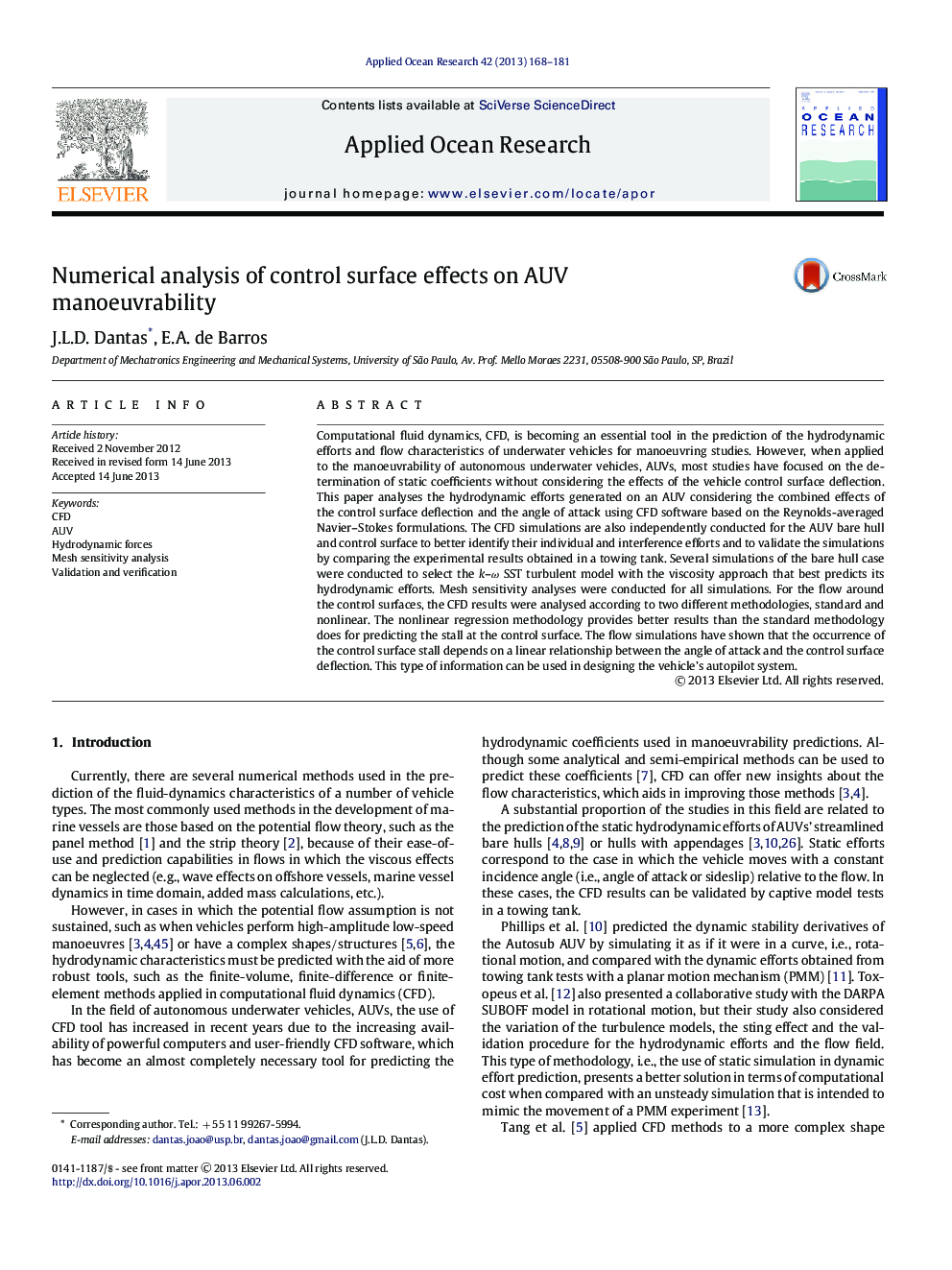| کد مقاله | کد نشریه | سال انتشار | مقاله انگلیسی | نسخه تمام متن |
|---|---|---|---|---|
| 1720032 | 1520261 | 2013 | 14 صفحه PDF | دانلود رایگان |

• A numeric investigation of an AUV body with a cruciform control surface configuration was performed by combining the angle of sideslip and the control surface deflection.
• To analyse the interference between the bare hull and the AUV control surfaces, the simulations treated the AUV bare hull and the control surfaces separately.
• A series of RANS simulations were conducted to select the turbulent closure model that best predicts the hydrodynamic efforts of the studied bodies.
• Two types of mesh sensitivity analyses were conducted on a hydroplane in the pre-stall and post-stall region, which verified their capabilities in flows with different characteristics.
• The analysis of these simulations provided a linear relationship to find the control surface stall condition, which is based on the vehicle's angle of attack and the control surface deflection.
Computational fluid dynamics, CFD, is becoming an essential tool in the prediction of the hydrodynamic efforts and flow characteristics of underwater vehicles for manoeuvring studies. However, when applied to the manoeuvrability of autonomous underwater vehicles, AUVs, most studies have focused on the determination of static coefficients without considering the effects of the vehicle control surface deflection. This paper analyses the hydrodynamic efforts generated on an AUV considering the combined effects of the control surface deflection and the angle of attack using CFD software based on the Reynolds-averaged Navier–Stokes formulations. The CFD simulations are also independently conducted for the AUV bare hull and control surface to better identify their individual and interference efforts and to validate the simulations by comparing the experimental results obtained in a towing tank. Several simulations of the bare hull case were conducted to select the k–ω SST turbulent model with the viscosity approach that best predicts its hydrodynamic efforts. Mesh sensitivity analyses were conducted for all simulations. For the flow around the control surfaces, the CFD results were analysed according to two different methodologies, standard and nonlinear. The nonlinear regression methodology provides better results than the standard methodology does for predicting the stall at the control surface. The flow simulations have shown that the occurrence of the control surface stall depends on a linear relationship between the angle of attack and the control surface deflection. This type of information can be used in designing the vehicle's autopilot system.
Journal: Applied Ocean Research - Volume 42, August 2013, Pages 168–181